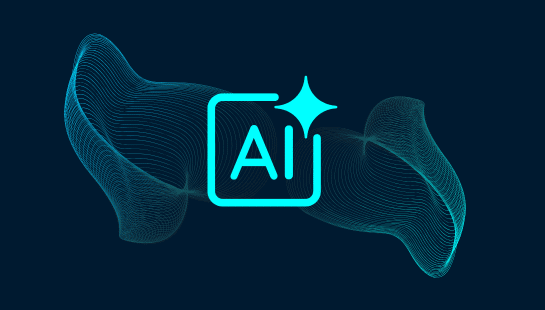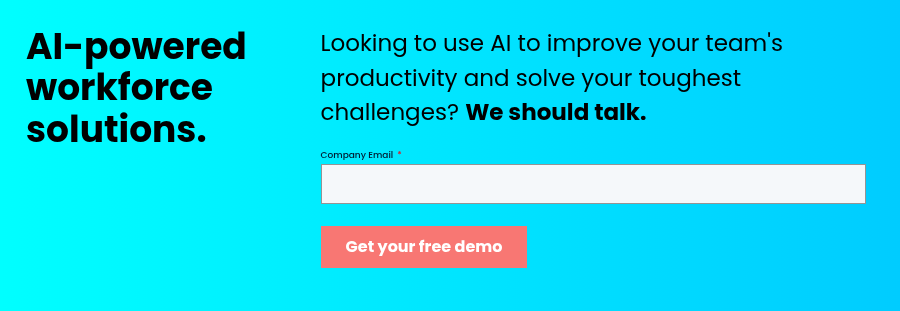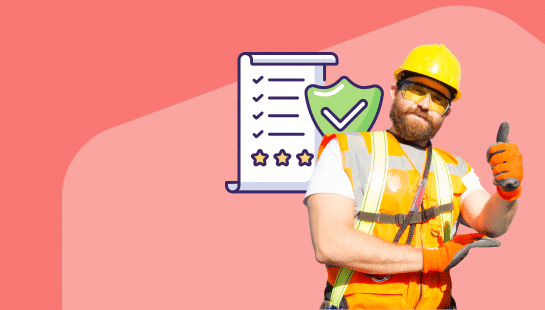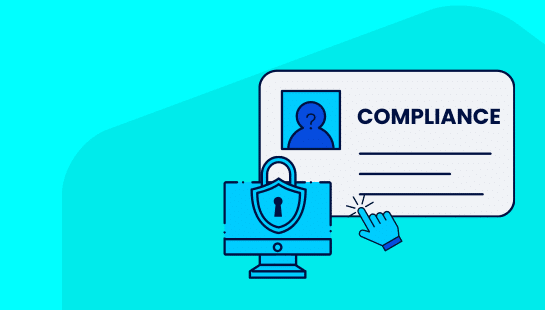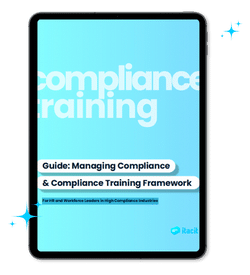GenAI and employee experience are changing modern workplaces faster than ever before. Recent research shows that GenAI can improve a highly skilled worker’s performance by almost 40% compared to their non-AI using counterparts. This significant boost in productivity not only changes work methods, but also reshapes employee expectations from their digital workplace tools.
The numbers tell an interesting story. Employees who feel their technology helps them work better are 158% more engaged than others. Your organization now faces new possibilities and challenges as AI tools for employee experience become more advanced. GenAI’s effect goes well beyond just making things more efficient. Studies predict it will add $650 billion in productivity value to the U.S. economy in the next decade. But the path forward needs careful planning – one-third of workers feel frustrated when they don’t have access to the right tools.
This piece shows practical ways to use generative AI workspace solutions to boost employee satisfaction, productivity, and retention. You’ll learn how these technologies can customize workplace experiences while steering clear of common issues that cause disengagement or raise privacy concerns.
The rise of AI in employee experience
AI’s integration into workplace systems stands as one of the most important technological changes in generations. This change alters not just how we work, but what it means to work in the 21st century. We’re entering an era where humans and machines partner together to redefine the modern workplace.
Why personalization matters more than ever
Personalization plays a significant role in employee experience today. The digital world shows that 71% of consumers expect companies to deliver personalized interactions. About 76% feel frustrated when this doesn’t happen. These expectations have naturally made their way into the workplace.
Employees who say their technology helps them work better are 158% more engaged than others. They also show 61% higher intent to stay with their company beyond three years. As digital natives join the workforce, they just need more personalization.
The younger workforce has grown up with customized experiences everywhere, from streaming services to online shopping. They expect similar personalization in their careers. Companies that get this right have an edge in attracting and keeping talent.
These statistics tell the story:
- 82% of employees say it’s important their organization sees them as a person, not just an employee
- 93% of employees think knowing how to customize their benefits is a “must-have” or “nice-to-have” option
- 72% of employees say benefits that meet their needs would make them more loyal to the company
People work harder when they feel valued as individuals rather than just parts of a machine.
How AI is changing workplace expectations
AI reshapes what employees expect from their workplace. Our research shows employees embrace AI more readily than their leaders think. They already use AI and are three times more likely than leaders realize to believe AI will replace 30% of their work next year.
AI-powered tools handle routine tasks, from document processing to simple customer questions. This frees humans from repetitive work. Employees now want to focus on work that adds more value and uses human skills like creative problem-solving, breakthroughs, and interpersonal abilities.
Beyond task automation, workplace expectations now include:
AI-enhanced learning solutions have boosted operational efficiency by 15% and increased productivity by 20% in ground applications. Employees benefit from training that matches their skills, career goals, and interests.
Modern feedback systems help continuous growth instead of yearly reviews. AI-led mentorship platforms connect workers with coaching based on their career goals, skills, and personality traits.
The core team now focuses on employee experience, with 47% of HR leaders making it a priority. They know that customization drives engagement. The old one-size-fits-all benefits model doesn’t work for today’s diverse workforce.
It also equips workers with more independence. Organizations using AI operationally perform 44% better than others in employee retention and revenue growth. This happens because AI enables work arrangements based on individual priorities and working styles.
All the same, this change brings challenges. Employees at companies going through detailed AI-driven redesign worry more about job security (46%) compared to those at less-advanced companies (34%). Finding the right balance between technology and human-centered design remains significant.
The secret to successful personalization lies in data. Understanding your employees’ skills, interests, and aspirations helps match them with relevant opportunities inside your company. AI processes this information at scale and provides analytical insights that might otherwise go unnoticed.
How generative AI is shaping employee journeys
AI technologies are radically changing how employees experience their workplace from day one until retirement. The numbers speak for themselves – 54% of companies already use GenAI in parts of their business.
AI-driven onboarding and training
A new employee’s first impression shapes their long-term commitment to the company. AI makes onboarding more welcoming with individual-specific experiences that introduce roles, team members, and company policies naturally.
Paperwork no longer overwhelms new hires. AI systems handle routine document processing and form filling automatically. HR teams can now build meaningful human connections. The financial benefits are clear – companies save over $18,000 each year with AI-driven onboarding.
The results show in retention rates. New hires who experience AI-assisted onboarding are 30% more likely to stay beyond their first year. Several elements make this possible:
- Learning paths customized to individual skills
- Information delivered right when needed
- AI assistants providing self-service support
These systems adapt as employees learn and grow. “AI can help improve the overall quality of recognition messages,” according to one platform provider. Smart algorithms watch how users perform and suggest extra training when needed.
Real-time feedback and recognition systems
Annual reviews belong in the past. AI now creates continuous feedback that tracks achievements, analyzes patterns, and recognizes good work at the perfect moment.
The psychological benefits stand out. Quick recognition strengthens good habits immediately. Early corrections keep small issues from becoming big problems. AI’s consistent criteria help remove bias from performance reviews.
Recognition now flows freely throughout organizations. AI platforms help coworkers appreciate each other by suggesting thoughtful messages based on their work together. This builds a culture where people naturally express gratitude.
Managers gain valuable insights from these tools. AI studies engagement patterns to suggest the best ways to recognize different employees or teams. This individual-specific approach boosts satisfaction and motivation.
Personalized career pathing with AI
AI’s biggest impact shows in how it reshapes career development. The old career ladder now looks more like a web of opportunities based on skills rather than fixed roles.
Companies using AI for career development see impressive results:
- Internal moves increase by 30% in the first year
- Employees stay almost twice as long
- Workforce flexibility improves by 40% compared to traditional approaches
AI creates complete skills profiles that spot talents useful across different roles. Looking beyond job titles, AI analyzes capabilities to enable sideways moves and create opportunities in flat organizations.
Career growth becomes more accessible and clear. Tools like Career Dreamer help everyone – new graduates, veterans, returning parents – find new possibilities based on their unique backgrounds. These platforms reveal hidden talents and growth areas, helping employees see their potential clearly.
Using digital platforms to enhance engagement
Digital platforms play a key role in creating better employee experiences in today’s workplace. Companies search for ways to connect with their staff, and digital tools offer powerful ways to create meaningful interactions throughout an employee’s time with the organization.
Benefits of employee experience software
Employee experience platforms help companies build connections, learn about their workforce, discover shared purpose, and foster growth. These digital solutions serve as strategic investments with measurable returns, not just optional add-ons.
Companies that put their employees first see an 18% lift in productivity through simplified processes and less friction. Research shows that businesses with strategic employee engagement programs see up to 51% lower attrition rates.
Employee experience tools show this approach with a complete platform that handles multiple touchpoints:
- Complete visibility and management control from a single platform
- Simplified recruiting, onboarding, training, and performance management
- Customizable surveys targeted by role, team, or department
These platforms prove valuable because they let HR teams automate routine support tasks. Your people teams can then focus on strategic initiatives instead of administrative tasks.
Evidence-based insights from these platforms offer another key advantage. Without actual data, improving employee experience becomes guesswork. A robust platform shows real-time information about what drives your workforce and spots potential issues.
Custom workflows and communication tools
Modern employee experience platforms shine through their customizable workflows. HR leaders can design specific onboarding processes for different roles and departments, automate repeated tasks, and stay compliant without extra effort.
These tools let organizations set up intake and onboarding workflows that ensure standard processes through automated activities, tasks, and approvals. This method makes complex processes simpler while giving teams the flexibility they need.
Communication tools have grown beyond simple email. An IDC report reveals that adaptable organizations keep employees at a 34% higher rate. This adaptability comes from connected employee workflows that create unified experiences across departments.
Modern platforms help employees find information through their preferred channels. The best communication tools typically offer:
- Message targeting by role, location, or department
- Multiple channels (email, mobile, messaging)
- Analytics to track engagement and understand what works
AI-powered collaboration and productivity
AI-powered collaboration tools enhance employee experience by making teamwork easier and more efficient. To cite an instance, see how AI chatbots in Slack and Microsoft Teams handle common questions, set up meetings, and provide quick help.
The results speak volumes, teams using Slack report a 47% increase in productivity and save roughly 97 minutes weekly with Slack AI. These gains happen because AI reduces administrative work and keeps teams focused on important tasks.
AI brings smart features to collaboration through:
Smart notifications that study communication patterns to highlight important messages Real-time speech-to-text transcription during meetings Content summarization that creates brief summaries of long documents or meeting minutes
These tools excel at removing communication barriers. AI-powered communication platforms tackle common workplace challenges by studying audience behavior, job roles, and choices to send the right message to the right person at the right time.
The best implementations change how teams work entirely. AI supports focus and helps employees work faster and better through personalization, predictive delivery, and real-time insights.
Many organizations start their AI-powered collaboration by picking the right platform, one that matches their business goals and works well with their existing tools.
Smarter benefits and wellness with AI
The modern workforce includes multiple generations with very different needs. Employees now expect tailored experiences. The old one-size-fits-all benefits approach no longer works. AI creates the foundation to build customized employee experiences at scale, from onboarding to benefits usage.
Flexible benefits tailored to life stages
Life stages bring unique challenges and priorities. Yes, it is true that 63% of employers use benefits to showcase their company’s purpose and employee value proposition externally. This change shows how employees need different things at different life stages.
AI looks at demographic information, family situation, and other factors to suggest the right benefits options. This customization meets a vital need. Generation Z and other younger workers want both flexible schedules and customizable benefits packages.
The results are remarkable. Employees who use AI-driven benefits platforms are three times more likely to enroll in ancillary and voluntary benefits like accident insurance or critical illness coverage.
These life stage needs vary widely:
- Young adults beginning careers need help finding financial footing
- New families require better work-life balance solutions
- Mid-career professionals often juggle caregiving responsibilities
AI lets companies go beyond standard offerings. Almost a third of today’s workforce consists of menopause-aged women (45-55). Smart employers now include menopause support in their benefits strategies. Research shows menopause costs women approximately $1.8 billion in lost working time yearly.
Learning and development in the AI era
AI is transforming how employees develop skills in the workplace. The traditional standardized training model has given way to AI-powered learning that adapts to each person’s needs.
Adaptive learning platforms and skill tracking
AI has transformed traditional learning management systems. These systems now track skills in real-time and create individual development paths. The platforms analyze employee data from multiple sources to create a clear picture of strengths and areas needing improvement. The results are clear – adaptive learning methods help people retain 60% more information compared to traditional lectures.
Modern skill tracking software gives useful data for talent decisions. HR leaders no longer wait for quarterly reports. They can now see growing competencies and emerging gaps as they happen. This ongoing monitoring helps keep workforce plans in sync with business needs.
These platforms excel at building detailed skills matrices that show employee proficiency levels. Organizations can spot strengths and weaknesses through automated assessments and analytics, which leads to better workforce planning.
Generative AI for interactive training
A fascinating pattern has emerged as generative AI spreads through corporate settings. The deeper AI integration goes, the more vital human skills like problem framing, collaboration, and creativity become. This change requires new training approaches.
Generative AI turns static content into engaging experiences through interactive training. Group discussions, problem-solving tasks, and AI-enhanced simulations encourage critical thinking and help maintain attention.
L&D teams have become strategic orchestrators instead of content producers. An industry expert explains, “You’re going to be in a very different mode of how you build content”. Teams now focus on finding high-quality source material that AI can use to create relevant, timely learning materials.
AI’s ability to personalize learning experiences marks a real breakthrough. AI-powered platforms create custom learning paths based on learning styles, available time, and existing knowledge. This approach changes how people gain new skills while boosting engagement.
Closing skill gaps with personalized content
Organizations face a critical challenge with growing skill gaps. Gartner’s research shows 70% of employees haven’t mastered their current job skills. Organizations need sophisticated approaches to upskilling and reskilling to address this issue.
Several organizations lead the way with innovative solutions:
- Google’s Whisper Courses teach microlearning through simple email suggestions for managers to use in one-on-ones or team meetings
- Amazon’s Associate2Tech offers 90-day courses for IT support roles with on-the-job training
- Amazon Technical Academy helps employees become software engineers through peer-to-peer training
AI identifies skill gaps by comparing individual performance with role requirements and business goals. AI-powered systems then create personal learning paths to close these gaps quickly.
The global L&D market now exceeds $350 billion and will grow over the next five years as AI advances. This growth shows how much organizations value developing adaptive, relevant, and personal learning experiences.
AI connects identified gaps directly with changing business needs. The system analyzes performance data and role requirements continuously to keep training aligned with company goals.
Balancing personalization with privacy
The way AI changes the employee experience creates a challenging balance between individual-specific experiences and employee privacy. Trust is the foundation of employer-employee relationships, but AI systems need access to lots of personal data, which raises serious privacy concerns. This becomes even more important with sensitive information like demographic details and performance evaluations.
Risks of over-monitoring and surveillance
AI-powered surveillance tools bring up serious questions about workplace privacy. Research shows 95% of HR leaders have implemented or plan to implement methods to track remote worker productivity. This approach doesn’t work well. Studies reveal monitored employees cheat more, take unauthorized breaks, work slower on purpose, and even steal office equipment.
The mental impact runs deep. 56% of monitored workers say they feel stressed, while only 40% of non-monitored employees report stress. Research also shows too much tracking makes people feel trapped in a “digital prison,” with 31% of employees feeling micromanaged and 23% experiencing constant surveillance.
A 2022 Morning Consult survey revealed something even more telling – half of tech workers would rather quit than be monitored during their workday. This shows a clear gap between monitoring goals and how employees actually feel.
Legal risks add to these privacy concerns. AI monitoring could lead to:
- Privacy invasion claims from webcam or microphone access
- Unfair labor practice charges if workplace organizing shows up
- Discrimination issues when protected characteristics come to light
- Unpaid wage claims from incorrect working time records
How to ensure ethical AI use in HR
Building trustworthy AI systems needs clear boundaries. Companies should get clear consent before collecting employee data. Being open about how AI works in HR builds trust, employees who understand the purpose and benefits are 70-80% more likely to share their data.
These strategies help balance personalization and privacy:
Look for patterns instead of watching individuals. AI data should improve workflows and spot trends rather than micromanage people. The focus should be employee support, not punishment.
Keep data collection simple and specific. Only gather information that directly helps AI’s purpose. This makes data safer and easier to manage.
Create strong data protection rules. AI and employee data deserve the same protection as financial and customer information. Regular privacy checks help spot and fix potential problems.
Let employees have a say. Team members should be able to choose whether they want AI processing their data. This respect for personal choice helps people feel valued instead of watched.
Steps HR leaders can take to implement AI responsibly
HR leaders need well-laid-out plans to implement AI responsibly. Research shows that 70% of organizations using AI in HR face major challenges like data privacy issues and employee pushback. This makes a careful approach essential to success.
Assessing employee needs and expectations
Your workforce’s readiness assessment through targeted surveys and focus groups should come first. Their comfort levels with technology will help shape better implementation strategies. Job function and seniority level segmentation can reveal different viewpoints across various demographics.
Your organization needs a baseline of AI literacy and skill levels through employee assessments. These assessments can include:
- Self-assessment surveys
- Practical problem-solving tasks
- Third-party evaluations
Research reveals employees are three times more likely to believe AI will replace 30% of their work within a year than leaders think. Almost half want more formal AI training, while 20% say they receive minimal to no support. This gap shows we need better preparation and communication.
Ensuring transparency in AI decisions
Trust grows with transparency in AI systems. Only one-third of organizations report their vendors are open about preventing discrimination and bias. You can solve this “black box” issue by making AI tools provide context with recommendations instead of final decisions.
Your employees should know about AI’s presence and role in their workplace during implementation. Non-experts should understand AI through clear documentation that explains system functions, data usage, and decision-making processes.
Employees need channels to question and challenge AI-driven decisions. This feedback loop creates a culture of continuous improvement and shows that AI supports human decision-making rather than replacing it.
Auditing for bias and fairness
Fairness in AI-driven HR decisions depends on regular bias audits. These systematic reviews serve multiple purposes:
- They detect collateral damage in data, algorithms, or decision processes
- They ensure compliance with anti-discrimination laws
- They improve decision quality through bias correction
Bias audits work best with a clear process: set objectives, work with diversity experts and data scientists, check algorithms, review training data, measure effects on underrepresented groups, and test continuously.
“Responsible AI” needs consistent methods across all areas. Each application should have designated champions who oversee ethical AI use, clear model design principles, and complete training. This approach reduces risks while maximizing your AI investment’s business value.
Future-proofing your workplace with AI
Success with AI depends on two critical foundations: trust and continuous growth. Organizations that get this right gain competitive edges in attracting and retaining talent.
Building trust through ethical AI
Trust is the life-blood of effective AI adoption. Studies show only 37% of people trust AI to be fair and unbiased. Workers need reassurance that AI won’t monitor, rank, or replace them without their input.
Employee confidence grows through transparency. The numbers prove this – 75% of employees show greater excitement about integration when they understand how AI affects their workflow. Adobe leads by example as they work with employees to test new AI capabilities and establish clear ethical principles.
Employee feedback creates systems where workers feel informed and strong. HR leaders have embraced this concept – 95% have implemented or plan to implement methods to track remote worker productivity.
Creating a culture of continuous improvement
Skills matter more than titles. Jobs are collections of abilities that can adapt as technology evolves. This perspective helps businesses and employees focus on growth instead of worrying about disappearing roles.
Organizations that follow the modern approach consistently outperform those implementing AI without process optimization. iTacit’s employee experience platform shows this in action by helping organizations improve workflow by timely answering employee questions.
Results need tracking – measuring AI integration progress helps organizations set standards for their development while getting employees involved in the assessment process.
Conclusion
Generative AI has transformed how organizations shape their employee’s experience. This piece shows how AI tools boost productivity, create personalized experiences, and reshape workplace dynamics. The numbers tell a compelling story – organizations can expect a 40% performance boost and $650 billion in added productivity value in the next decade.
Digital AI-powered HR assistants like iTacit have become crucial in providing timely responses for employee questions. These solutions optimize workflows and are a great way to get data that shapes strategic decisions. Companies using these technologies see real results: 18% higher productivity, 51% lower attrition rates, and employee participation metrics improved by a lot.
AI brings huge benefits, but teams need to think over implementation carefully. The key is finding the right balance between personalization and privacy to avoid creating distrust through excessive monitoring. Employees want AI that empowers them, not watches their every move.
Success with AI needs a well-planned strategy. Start by evaluating your workforce’s needs and readiness. Make the system workings and data usage transparent. Regular bias checks help keep decisions fair and ethical.
Note that AI works best when it complements human abilities rather than replacing them. Leading organizations see AI as a partnership that increases human creativity, empathy, and problem-solving with machine efficiency and pattern recognition.
Your AI workplace journey should prioritize trust through ethical practices while fostering a culture of continuous learning. Employees value tools that handle routine tasks and help develop uniquely human skills.
This AI revolution centers on people, not just technology. Organizations that grasp this difference will edge ahead in attracting and keeping top talent while delivering exceptional employee experiences.
